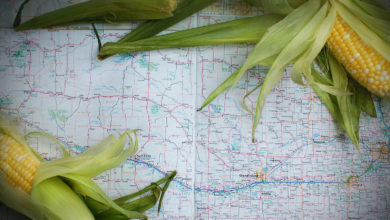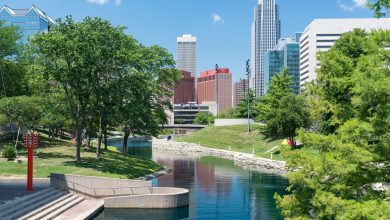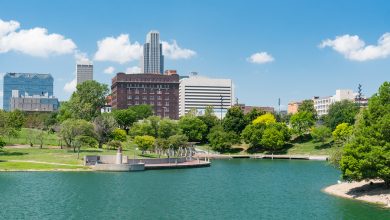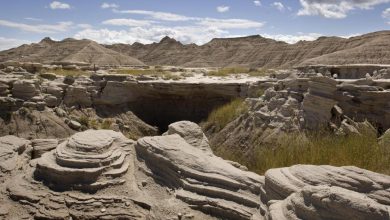The Most Incredible Sights in Nebraska
Don't miss the chance to see these 4 iconic Cornhusker locations
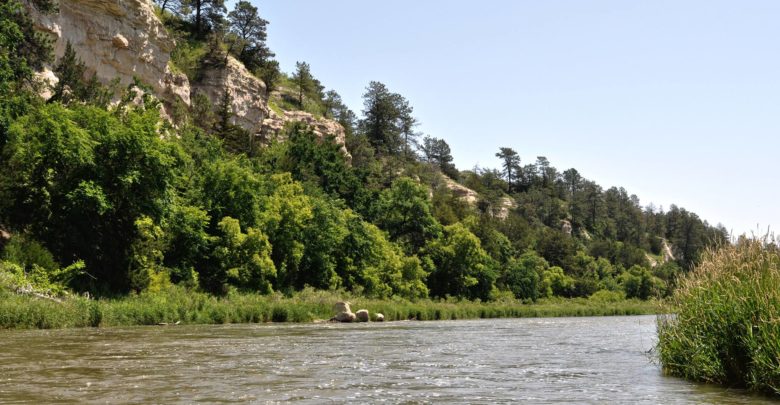
The state of Nebraska is located in the Midwestern United States and in the Great Plains. It’s home to almost 2 million Americans. The Cornhusker State is known for raising corn and raising beef, and it’s the only state in the union with a unicameral state government. Buffalo Bill Cody held his very first rodeo in Nebraska in 1882. But there’s so much more to Nebraska, including its amazing natural wonders. Though there are many in the state, we’ll keep this list to four of the most beautiful Nebraskan natural wonders, in no particular order.
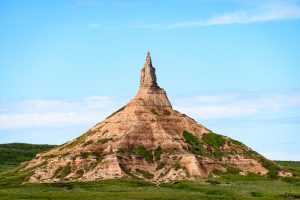
Chimney Rock
Chimney Rock is a spire-like rock formation located in western Nebraska 20 miles southeast of Scotts Bluff National Monument. It is located in Morrill County, near the town of Bayard. The formation consists of a 120-foot needle on top of a cone-shaped mound. Altogether the formation rises 475 feet above the North Platte River. The peak rises more than 4,200 feet above sea level.
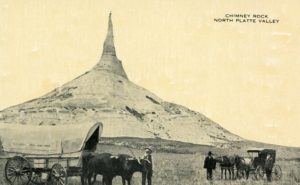
In the mid-19th century, Chimney Rock served as a landmark along the Oregon, California and Mormon Trails, which ran along the north side of the rock. To early travelers heading westward, the sight of Chimney Rock meant they were near the end of the Great Plains and embarking on the beginning of the Rocky Mountains. The Nebraska State Quarter, released in 2006, features a covered wagon heading westward past Chimney Rock. The quarter commemorates Nebraska’s role in the westward migration.
Chimney Rock was designated as a National Historic Site in August 1956. It is also a National Park Service designated area, but it is maintained by History Nebraska. The Ethel and Christopher J. Abbot Visitor Center is located at Chimney Rock National Historic Site and features a video about pioneers and westward migrations, museum exhibits and a gift shop.
For more information about Chimney Rock, and to learn more about what there is to do at the National Historic Site, visit https://www.nps.gov/nr/travel/scotts_bluff/chimney_rock.html.
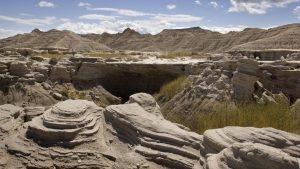
Toadstool Geologic Park
Just north of Crawford, Nebraska, lies Toadstool Geologic Park. The area is referred to as the “Badlands of Nebraska” or the “Desert of the Pine Ridge.” That’s because the area is reminiscent of the Badlands in South Dakota. The area is full of natural beauty all its own. Toadstool Geologic Park is open to the public 24 hours a day. Camping is available in the park. Inside the park is a one-mile loop trail where many fossils like those of large prehistoric entelodonts and hyaenodons.
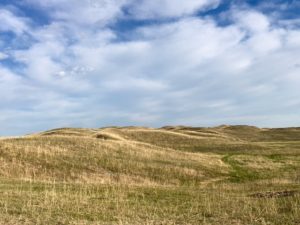
Sandhills
The area of Nebraska’s Sandhills, often written “Sand Hills,” varies in size depending on who you ask and where you get your information. The area measures anywhere from as small as 19,600 square miles to as large as 23,600 square miles. Sand dunes in the Sandhills area stand more than 33 stories high. In the eastern portion of the area, the elevation is around 1,800 feet, and it gradually rises to around 3,600 feet as you move westward.
The Sandhills are dotted with relatively stable dunes, thanks to the grass growing in them. Since the hills sit on top of the massive Ogallala Aquifer, there are both temporary and permanent shallow lakes in the low-lying valleys between the dunes.
The Sandhills area was designated as an ecoregion by the Worldwide Fund for Nature. The area is different from other grasslands in the Great Plains. According to the Worldwide Fund for Nature, approximately 85% of this ecoregion functions as an intact natural habitat.
The beautiful Sandhills area is home to more than 20 species of plants, many of which are sand-tolerant and only a few of which are exotics; the rest are native to the area. One species in the area called the blowout penstemon is an endangered species of plant that can only be found in the Sandhills and in environments like the Sandhills in central Wyoming. Many of the plants in the Sandhills area are responsible for keeping the sand dunes stabilized. They also created a unique ecosystem for plants and animals in the area.
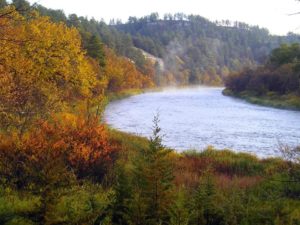
In addition to several species of plants, the Sandhills are also home to many species of birds. The Sandhills are part of the Central Flyway for migratory birds. Migratory geese, cranes and several species of ducks can be found near the ponds and lakes in the area. Other birds found in the area include the western meadowlark, which is the state bird of Nebraska. The Sandhills area is a place chock full of natural beauty.
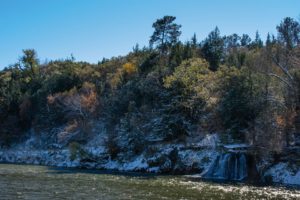
The Niobrara River
The Niobrara River in Nebraska has been designated a National Scenic River by the U. S. National Park Service. In order to be classified a national scenic river, the river must be free-flowing, have a somewhat accessible shoreline that is mostly undeveloped and have clean water. The river drains almost 12,000 square miles. Some of the most beautiful waterfalls in the state are located near the Niobrara River. There are also a number of springs near the river. It flows for 76 miles and features four distinct geological layers.
The area is a visitor favorite and offers opportunities for canoeing, kayaking and tubing.
There are multiple fossil sites in the area, as well as huge rock formations. Along the shoreline, there are numerous beautiful trees of different kinds. More than 92 different species of butterflies can be found in the Niobrara Valley, include one species that is a hybrid of three different butterfly species. The Niobrara River area is also home to whooping cranes, bald eagles and the peregrine fountain, as well as the olive-backed pocket mouse and Bailey’s eastern woodrat. Niobrara State Park is located at the confluence of the Missouri and Niobrara Rivers.

